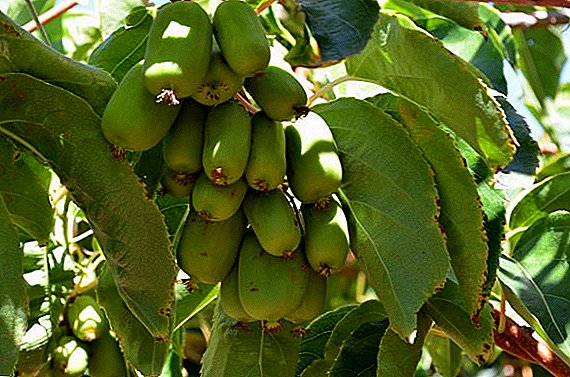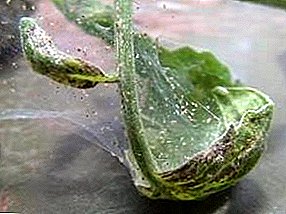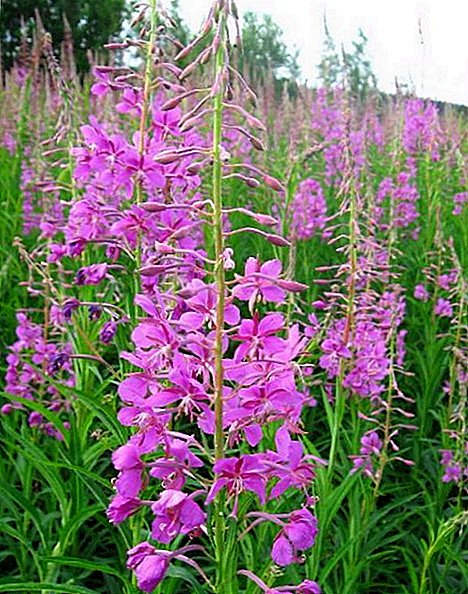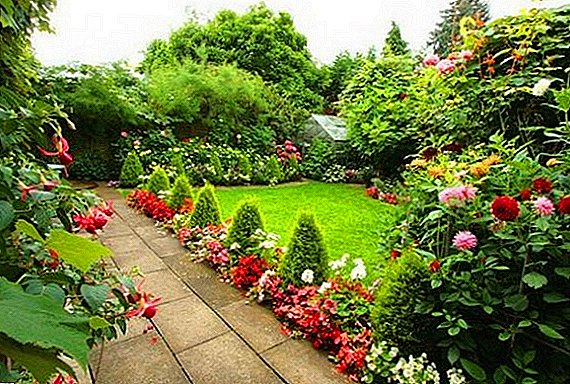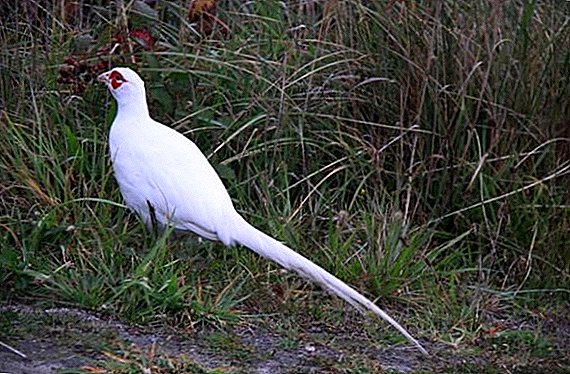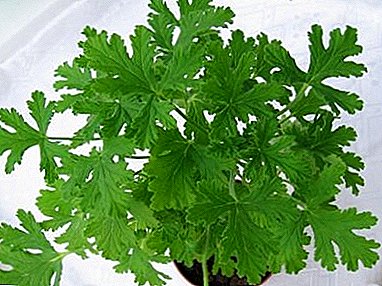
Fragrant geranium is a common plant that is valued not only for its attractive appearance, but also for its beneficial properties, which are widely used in traditional medicine. The culture is presented in the form of an evergreen shrub whose home is South Africa. It is easy to care for a plant, but it is simply necessary to observe elementary agrotechnical rules.
Features
This is a perennial culture, having the form of a branched bush, whose height is 1 m. The root system is highly developed, and the leaf plate is bright green. The inflorescences are small, their color is white or pink, and the number of petals is 5.
Not all varieties of sweet geraniums can bloomSome types of flower growers contain due to the decorative appearance of foliage and pleasant aroma. When flowering is completed, the fruit appears in the form of a box. It is in it that seed ripening will occur.
The curative room geranium produces a pleasant aroma thanks to small glands, which are located on the outer and inner side of the leaf plate. They are filled with essential oil.
To feel the incredibly pleasant aroma, simply rub your hands with a few leaves of geranium.
A photo
Here you can see photos of the plant:





Microclimate
- Lighting. Scented geranium feels comfortable on a warm and bright windowsill. It is best to choose windows of the southern direction, but moreover, the direct sunlight for the plant is not destructive, but on the contrary, with their lack of flowering will be scarce or absent altogether. Hanging baskets and pots are great for growing geraniums.
- Temperature. In winter, the plant will feel comfortable if you observe the temperature regime of 8-10 degrees of heat, but in summer it will be - 25-30 degrees. In summer, the flower can be taken out on the street or on the balcony.
- Humidity. Scented home geranium has the ability to concentrate water in the stem and leaves. Because of this, it does not need spraying and will not tolerate the excessive importance of the soil. The optimal moisture level for the flower remains 60-70%.
Planting and transplanting
There is nothing difficult in it:
- The first thing the bush is pruned.
- Then remove all unnecessary branches and leaves from it.
- Plant the plant in a pot with a layer of drainage at the bottom and an earthen mixture.
Planting fragrant geranium must begin with the correct choice of substrate. It must be rich in nutrients. For self-preparation of soil mixture it is necessary to mix in equal proportions the following components:
- peat;
- sand;
- garden land.
The landing process is as follows:
- Lay a drainage layer on the bottom of the tank.
- Top add nutrient soil (1/3 pot).
- Prepare the stalk: after it is cut, hold it in the air to dry the wound.
- Plant the plant in moist soil, covered with a cut plastic bottle for a week.
When the sprout is well rooted, it is pinched a little to stimulate branching.
Growing house
Watering and feeding
 Scented geranium prefers moderate moisture., as an overabundance of moisture contributes to rotting of the root system and wilting of the leaves. In winter, the amount of watering should be reduced several times, because the plant is well enough to tolerate a lack of fluid.
Scented geranium prefers moderate moisture., as an overabundance of moisture contributes to rotting of the root system and wilting of the leaves. In winter, the amount of watering should be reduced several times, because the plant is well enough to tolerate a lack of fluid.
Spraying the plant is not necessary because the flower does not suffer from dry air. This procedure can be carried out only in summer under the condition of high temperature.
2 months after transplantation, fertilizing should be done 2 times with an interval of 2 weeks. For improved flowering, liquid mineral compounds are used with hanging phosphorus concentrations and minimal nitrogen. But the plant absorbs the organics poorly. Relevant to make top dressing during the period of active growth.
How to care for non-flowering odorous species?
It is necessary to care for non-flowering odorous geranium in the same way as fragrant geranium, observing the above recommendations.
Pruning
To achieve lush flowering, geranium must be cut annually.leaving shoots with 2-4 nodes. Yellowed and dried leaves are also subject to removal.
To perform these procedures, it is necessary to prepare a sharp knife. Hands are not recommended to tear off the leaves, since the presence of torn edges leads to rotting. Treat all cutting sites with crushed activated carbon.
Possible problems, pests and diseases
When growing a fragrant geranium, the following problems are possible:
- No flowering. It occurs due to the wintering of the plant at elevated temperatures and bright light.
- Blackening of the stem. Occurs when the flower is affected by root rot.
- Dry painting leaves. This is a sign of a lack of moisture in the ground. It is necessary to water a flower more often.
- Withering lower leaves, yellowing and rotting. This is the result of frequent watering, between which the soil does not have time to dry. For the treatment of the plant, all the affected leaves are cut, and the cut points are treated with activated carbon powder.
- Leaf bulges. These are symptoms of excess moisture in the ground. It is necessary to water a geranium in 2 days after drying of the top layer.
- Gray rot. It occurs when water stagnates in the soil.
As for pests, whitefly and aphid affect fragrant geranium. You can fight them with the help of such drugs as Konfidor, Aktara.
The scented geranium is a fragrant and no less attractive plant that actively adorns the window sills, loggia, arbors. The flower was widely spread not only due to the amazing aroma of the essential oils contained in its leaves, but also due to its simplicity of care and resistance to diseases.


